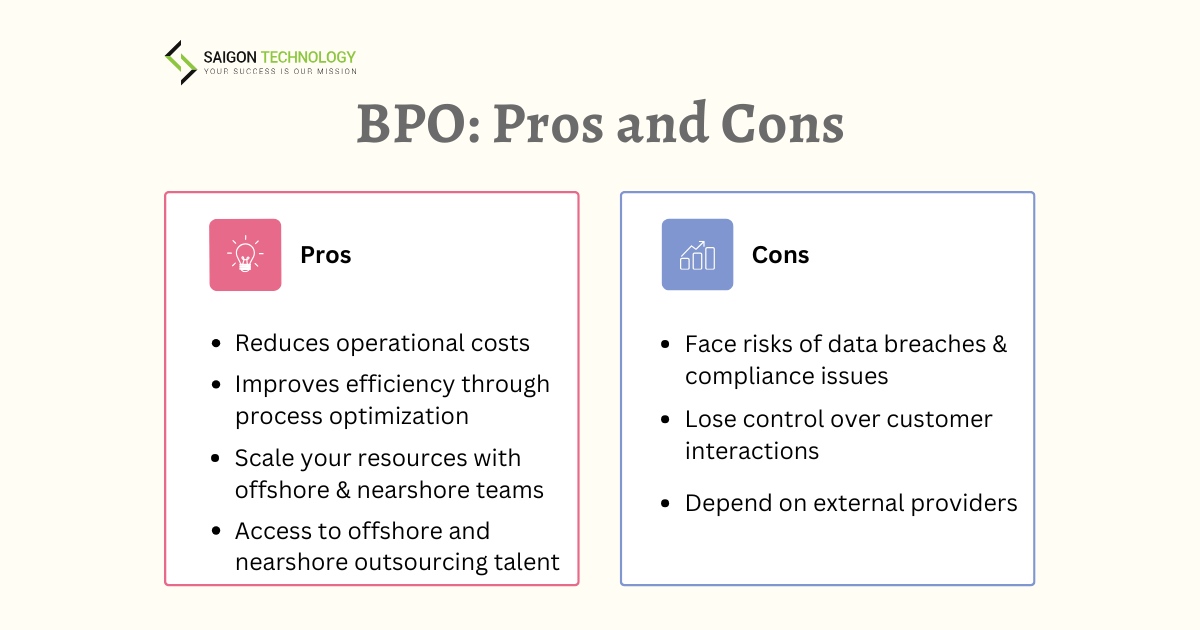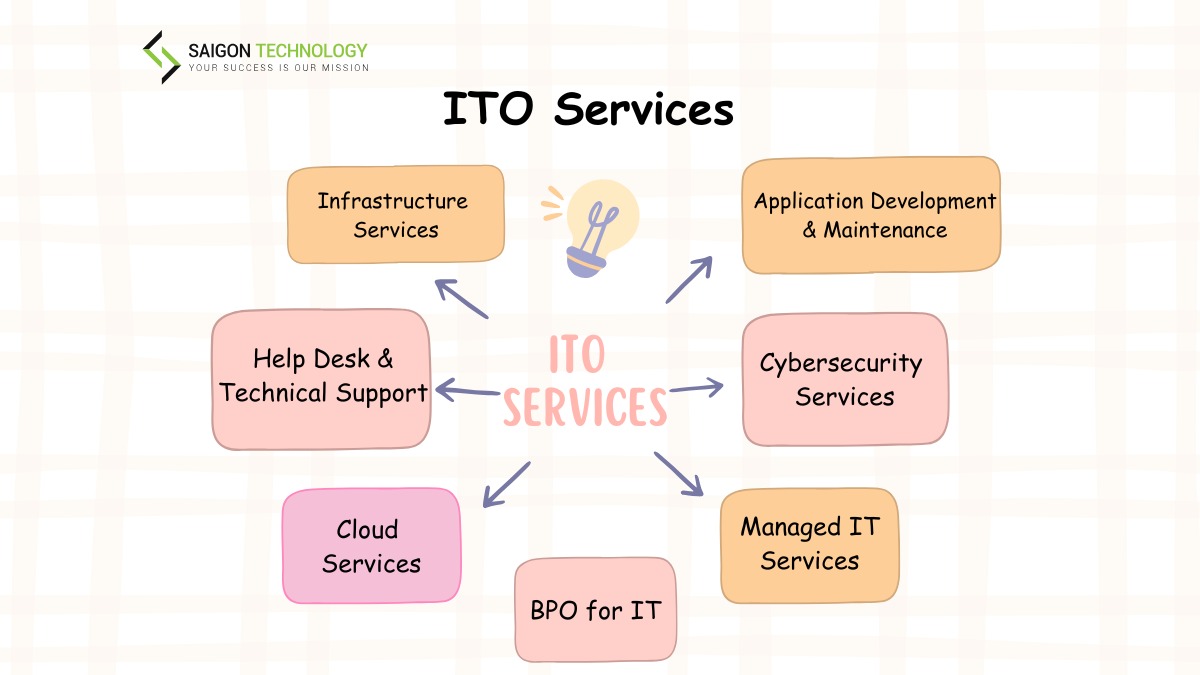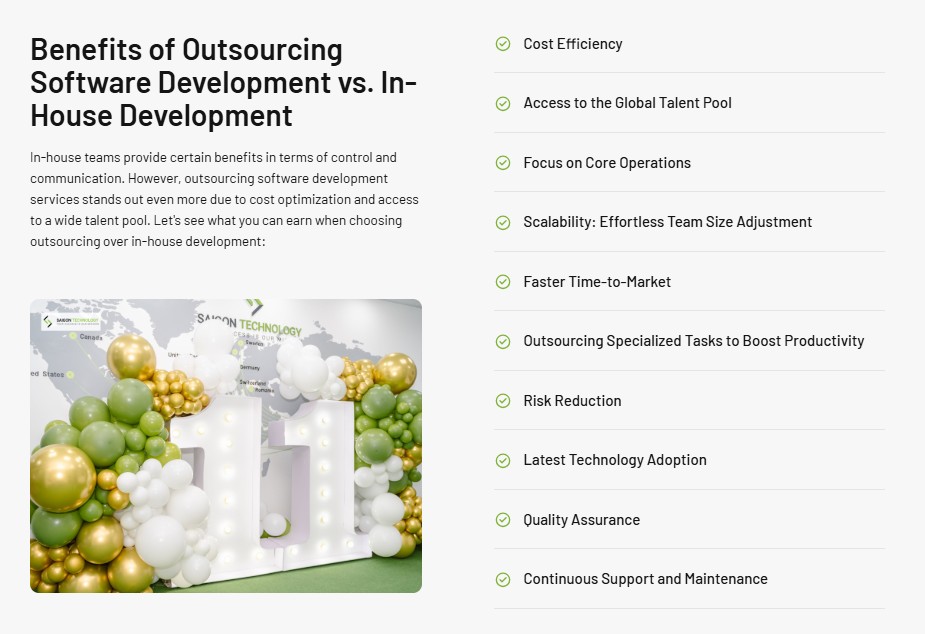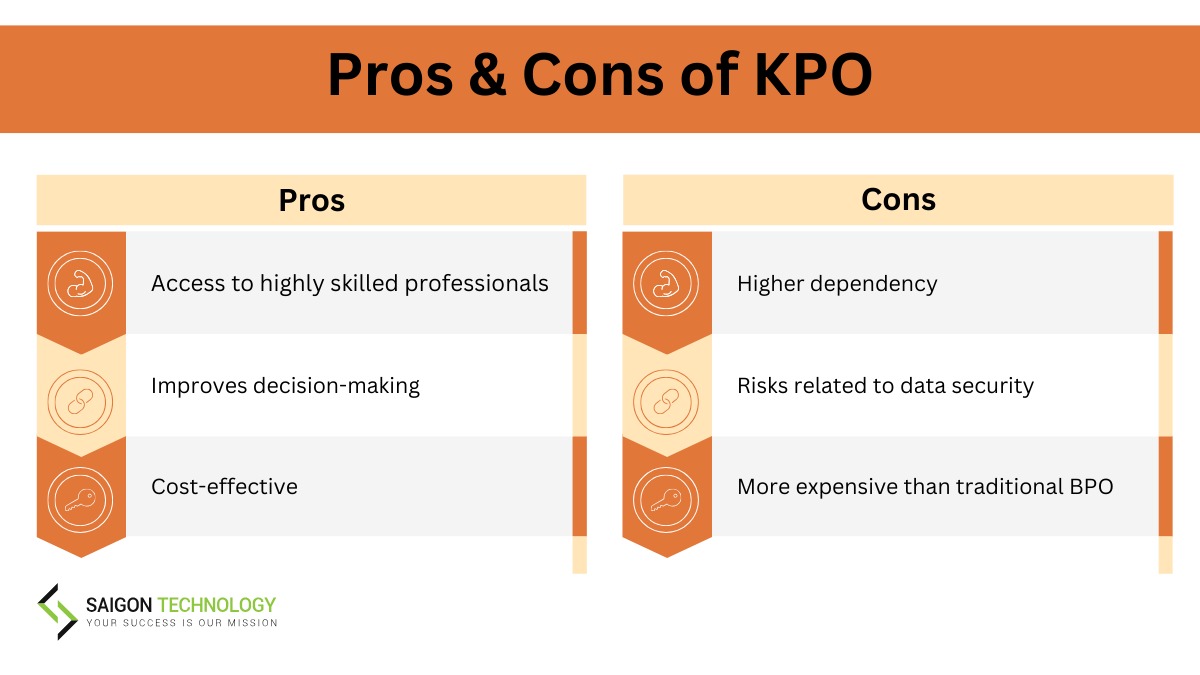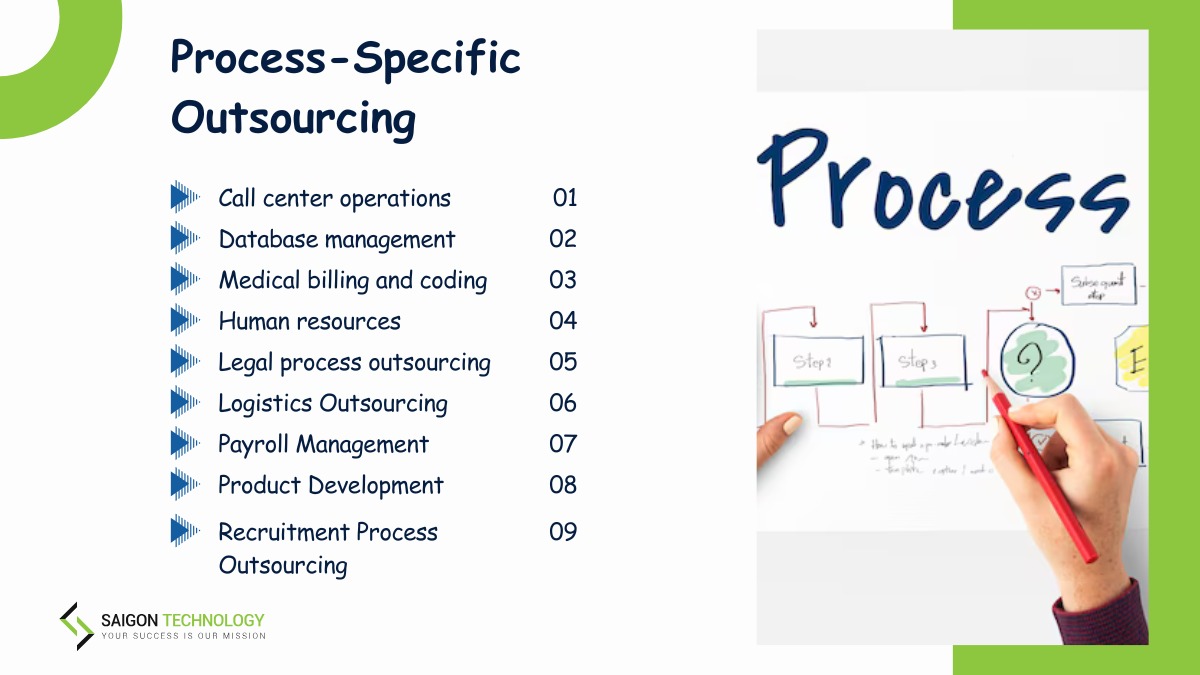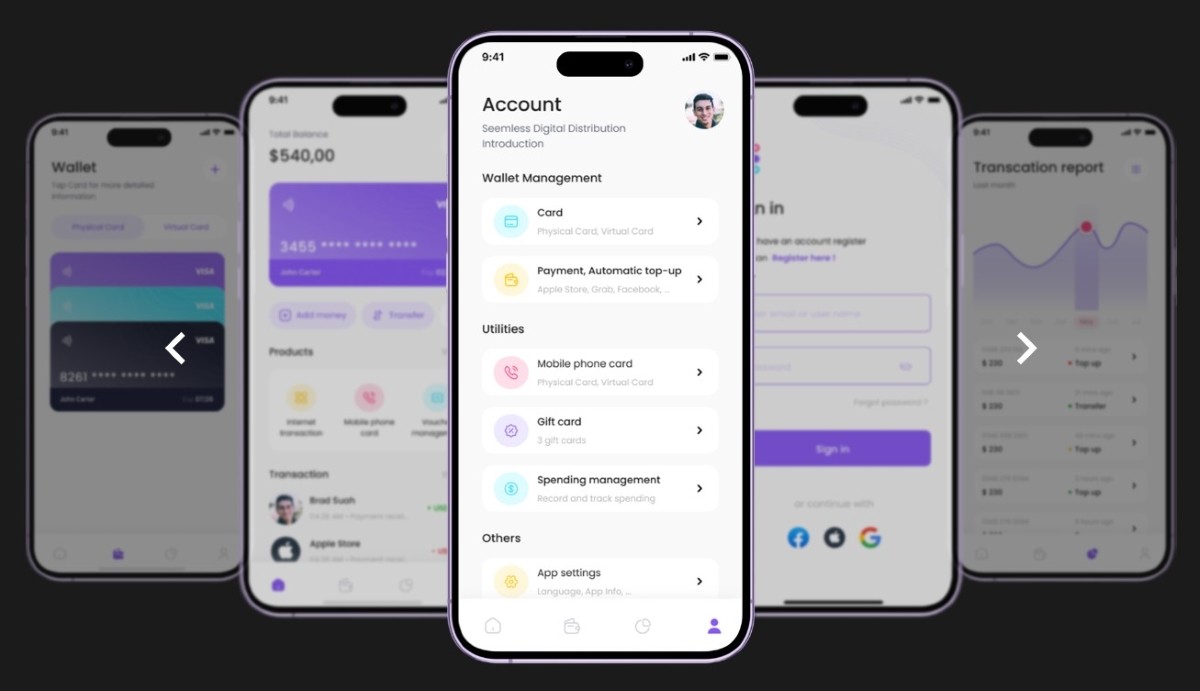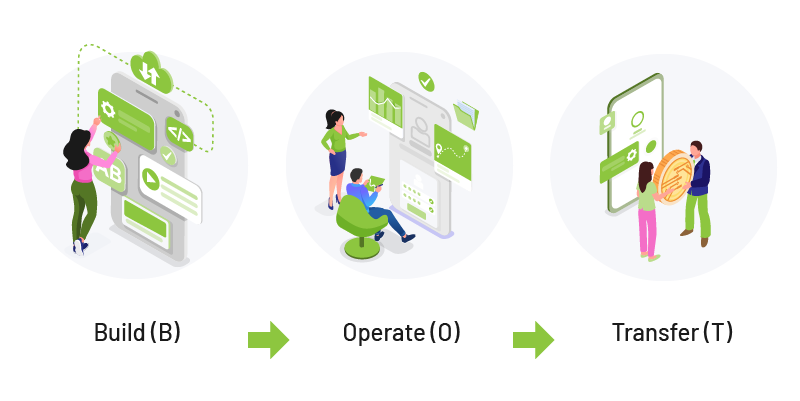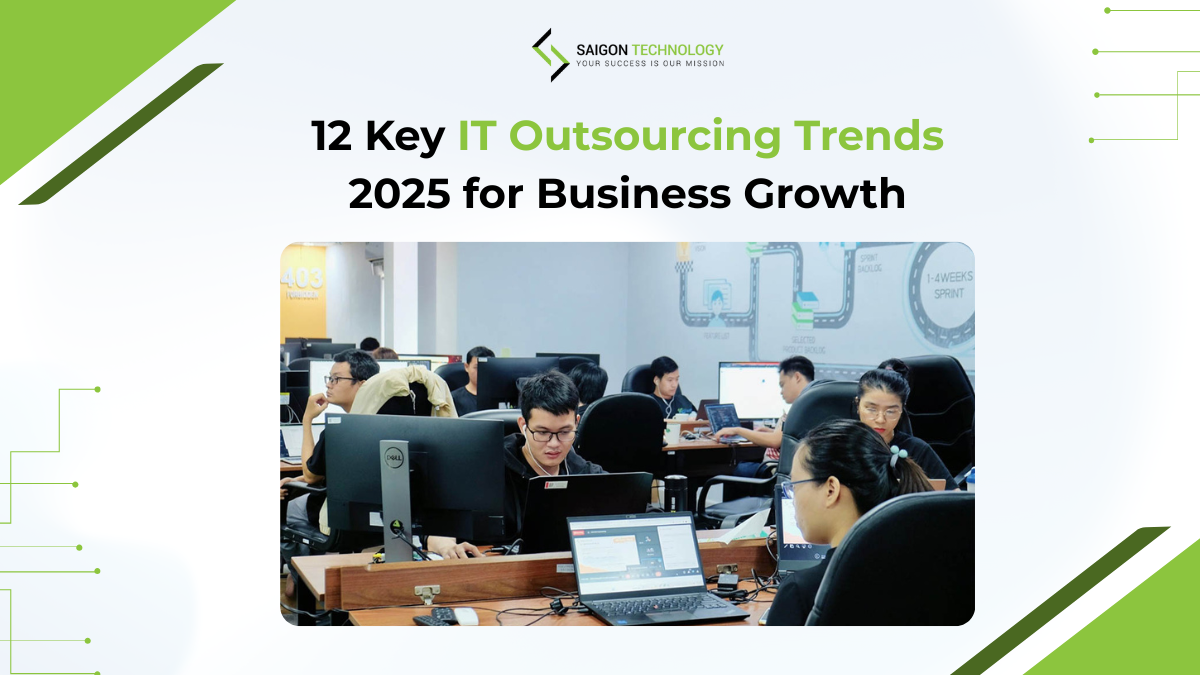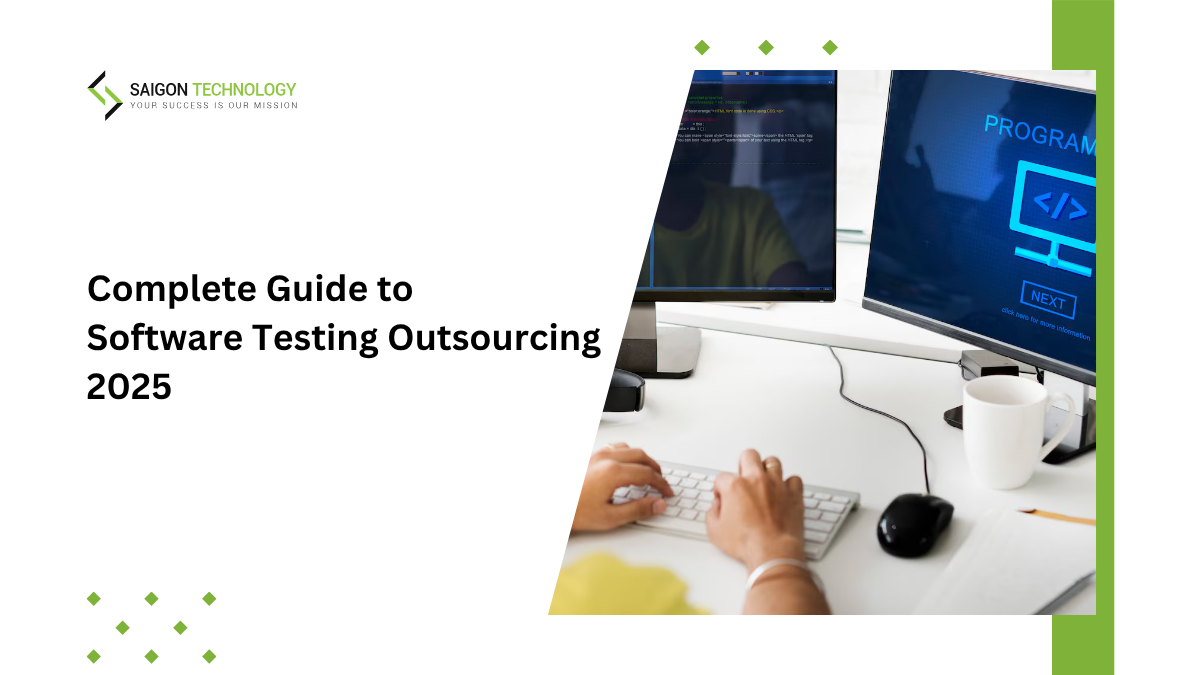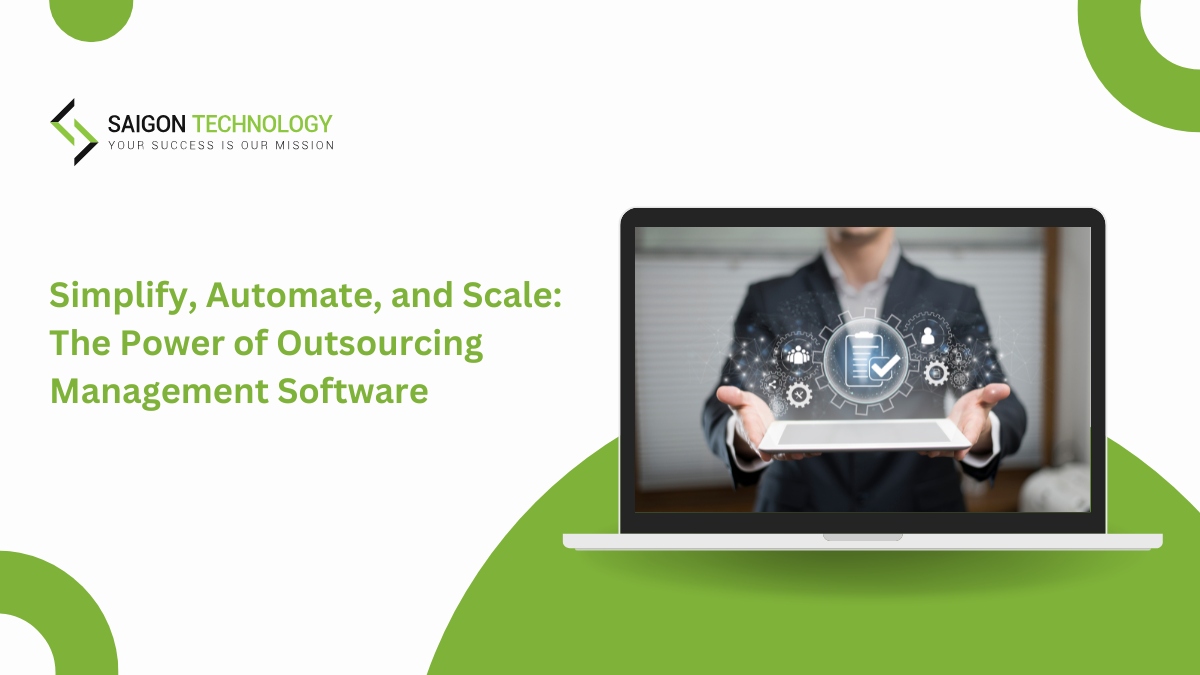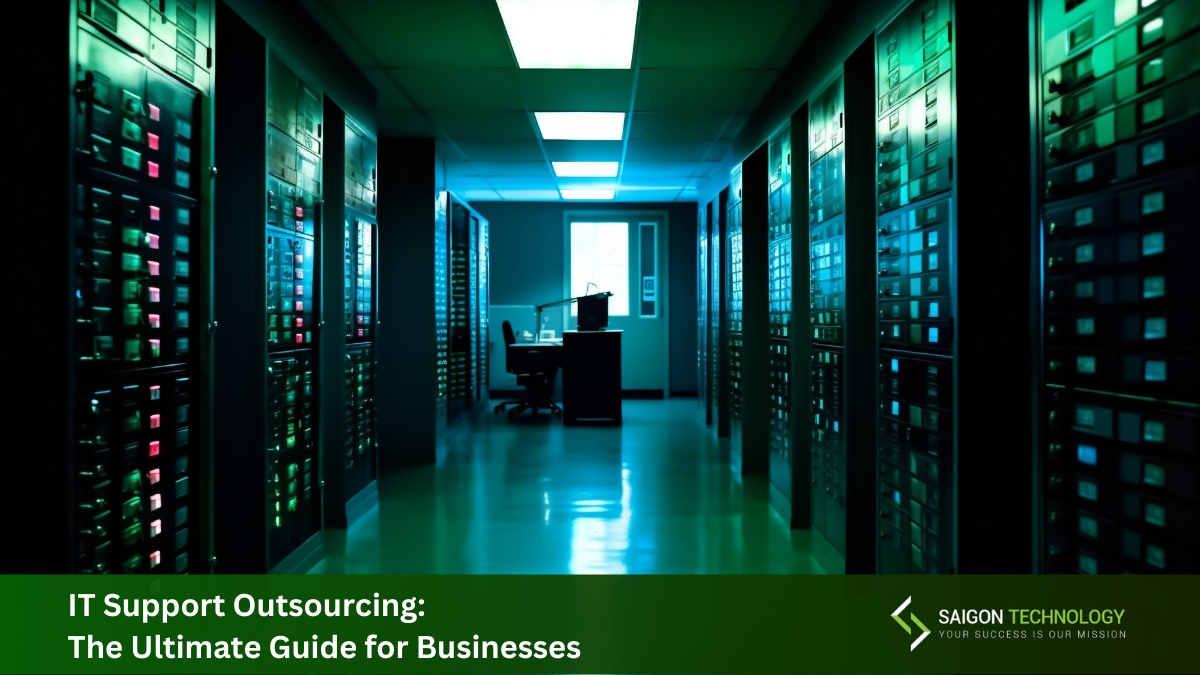Outsourcing is a service in which you hire external experts to handle tasks instead of doing everything in-house. Professional outsourcing helps you access skilled talent. For example, as you choose IT outsourcing, IT professionals can handle your IT project and ensure top quality. Their expertise speeds up the development process. Another great thing about business outsourcing is that you don’t have to hire full-time staff. HR management won’t bother you anymore.
There are several types of outsourcing. Each serves specific needs. Onshore, nearshore, and offshore software development are already popular. But your options go beyond that. So, if you plan to outsource, check all your options first. This article will explore the major outsourcing types. You can also learn some tips to ensure you select the ideal outsourcing partner. Let’s dive in!
10 Major Types of Outsourcing
You can choose from different types of outsourcing. What fits you the most? Professional outsourcing aims to fulfill your specific needs. We will highlight key types of outsourcing right here. After learning their pros and cons, you can find your perfect match.
1 – Business Process Outsourcing (BPO)
Business Process Outsourcing (BPO) means you hire external providers to handle non-core tasks. Companies use BPO services and standard operation procedures for customer support, HR, payroll, and more. Then, they can focus on what they do best while experts handle the rest.
Industries:
- Customer service (call centers)
- Human resources (HR)
- Finance and Accounting
- Supply chain management
Pros
- Cost Savings: This cost-effective outsourcing approach reduces overhead expenses.
- Increased Efficiency: As you free up in-house teams, you will have more resources for business activities.
- Scalability: The BPO model offers flexibility. So feel free to scale your resources with offshore and nearshore outsourcing.
- Access to Specialized Talent: You get expert back-office support. The skilled professionals ensure smooth operations.
Cons
- Data Security Risks: You share your sensitive business information with third-party providers. It can be a risky move.
- Reduced Control: You have to rely on external vendors to handle business processes.
- Communication Barriers: Offshore BPO providers live in a different country. Vendor management will be complex due to cultural and language differences.
2. Information Technology Outsourcing (ITO)
Information Technology Outsourcing (ITO) is about hiring external experts for IT tasks. Many businesses outsource software development, which is one of the most common types of outsourcing. You can do the same thing with cloud computing and cybersecurity. Many companies use professional outsourcing services to enhance their tech operations.
Industries:
– Infrastructure Services
– Application Development & Maintenance
– Help Desk & Technical Support
– Cybersecurity Services
– Cloud Services
– Business Process Outsourcing (BPO) for IT
– Managed IT Services
Pros
- Cost Efficiency: IT outsourcing strategies save costs related to in-house IT teams. You don’t have to spend on hiring, training, and managing your staff.
- Access to Global Tech Talent: Geographical distance won’t be a problem. You can access skilled professionals worldwide.
- Scalability: The team size can vary to fit your changing project requirements. IT managed services ensure smooth operations.
- Faster Innovation: Expert-driven solutions help accelerate digital transformation.
Cons
- Quality Control Issues: The vendor’s expertise determines the quality of your project.
- Security Risks: You may face security risks. Ask your partner to take steps to prevent cyber threats and data breaches.
- Time Zone Differences: If you have remote IT support, such as from an offshore team, there will be time zone differences. Collaboration will then be more challenging.
3. Software Development Outsourcing
There are different types of outsourcing when it comes to technology. Software development outsourcing is about hiring external teams to build, maintain, and upgrade software applications. This includes mobile apps, enterprise platforms, and web development projects. For many businesses, outsourcing web development is just as crucial as mobile or backend systems. This is especially true when aiming for a unified cross-platform experience. Offshore—one type of outsourcing—is one of the most effective ways to reduce costs.
Industries:
- IT and tech startups
- E-commerce and fintech
- Healthcare software solutions
- Enterprise software development
Pros
- Cost-Effective Development: Your outsourcing partner can save more costs than your in-house teams can. You should work with an offshore team in a country where labor costs are low. Also, choose the right outsourcing models to fit your budget.
- Access to Global Tech Talent: You can access global tech talent from around the world. Check it out to build your dream team.
- Faster Time-to-Market: The dedicated development team works hard to speed up product development.
Learn more: Benefits of Outsourcing Software Development vs. In-House Development.
Cons
- Quality Variability: Vendor expertise affects quality.
- Intellectual Property Risks: Code ownership and security issues may arise. That’s why you need a strong development contract to protect your project.
- Time Zone Challenges: Offshore teams with a different language may have collaboration difficulties. In this case, you can consider nearshore development.
4. Knowledge Process Outsourcing (KPO)
Knowledge Process Outsourcing (KPO) focuses on complex, knowledge-based tasks. For example, financial research, legal analysis, and data insights are challenging. Companies use outsourced knowledge work to access expert skills. Professionals know how to handle those tasks well.
Industries:
- Investment banking and financial services
- Legal process outsourcing (LPO) and compliance research
- Data analytics and business intelligence outsourcing
Pros
- Highly Skilled Expertise: Trust the experts! They can handle specialized tasks with precision.
- Enhanced Decision-Making: KPO services give you valuable insights. Thus, you can make more informed decisions.
- Cost Savings: Since you don’t build in-house research teams, the expenses for your project will be reduced.
Cons
- High Costs Compared to BPO: Captive KPO setups and high-end services can be costly. When comparing KPO vs BPO, KPO is more expensive.
- Confidentiality Risks: Data security in KPO is crucial because you work with sensitive data. You need strong intellectual property protection to ensure safe outsourcing.
- Vendor Dependence: The tasks you outsource are complex. Thus, finding top-tier providers can be tricky.
5. Process-Specific Outsourcing
Process-specific outsourcing means the external experts handle specific operations. You can outsource services like contract drafting, compliance, and intellectual property management. Here are some types of outsourcing in this regard:
5.1 – Call center operations
Businesses hire external call centers to help with customer support when they have a high volume of call traffic. These call centers handle customer questions and complaints quickly.
5.2 – Database Management
With this service, the experts store and retrieve data securely. Client institutions can then access the data upon demand. The third party would oversee the optimization of data. You can also provide cybersecurity options and backups.
5.3 – Medical billing and coding
Healthcare providers outsource healthcare billing and coding services. The specialized agencies help prevent errors and ensure efficiency. Plus, they have experience in handling patient records and insurance claims. They also ensure regulatory compliance.
5.4 – Human resources
The external vendor can deliver value in employee training. They also help with compensation, benefits, and appraisal systems, among others. You will then decrease the workload in the HR department. This service also ensures better staff performance.
5.5 – Legal process outsourcing
You have third-party experts review legal documents. This service often involves knowledge process outsourcing. Your partner can also help you draft contracts and manage intellectual property. Thanks to this approach, they can reduce the cost of legal services and can improve case efficiency.
5.6 – Logistics Outsourcing
This partnership comes in handy for inventory control. It is also essential for warehousing and transportation functions. If you are struggling with supply chain management, this solution can help. Logistics outsourcing will substantially lower shipment costs and enhance on-time deliveries.
5.7 – Payroll Management
Payroll management means third parties are responsible for salary disbursement and tax filing. They ensure compliance with prevalent labor laws. With their help, you can ensure accurate calculations and timely payments.
5.8 – Product Development
This is where companies give projects involving research, prototypes, and designs to experts. This way, they ensure faster time-to-market at an optimized cost. Such outsourcing also allows you to tap into worldwide engineering expertise.
5.9 – Recruitment Process Outsourcing
Third-party agencies employ state-of-the-art technology and specialized knowledge for talent sourcing and recruiting. With a well-planned process, you can improve the quality of the workforce.
Pros
- Enhanced Access to Proficient Talent: Businesses can benefit from experienced vendors. Hence, they get quality outcomes.
- Lower Cost of Expertise: You have different choices for finding experts. They can come from offshore countries with low labor costs.
- Improved Agility and Expertise: Skilled experts handle the jobs. Therefore, the internal team can free up their time for innovation and growth.
Cons
- Security Risks: The offshore vendor needs to have robust cybersecurity protocols. Otherwise, you may suffer from data breaches.
- Servicing Control: Vendors may tend to drop their quality benchmarks. Hence, they might disrupt the market credibility of your company.
- Communication and Coordination: Time zone differences and cultural barriers may prevent the best quality output.
6. Professional Outsourcing
Professional outsourcing means you give professional tasks like legal services, engineering, fund accounting, data analysis, and marketing to external specialists. Their outsourced expertise can get the complex job done right. You can also outsource different roles. For example, many businesses work with external CAD operators, health professionals, and certified public accountants. The licensed professionals from professional outsourcing services will give you a lot of help.
Industries:
- Legal services
- Outbound sales
- Recruitment
- Accounting and financial strategic consulting
- Engineering and architecture
- Marketing and advertising
Source: Freepik
Pros
- Access to Expertise: By contracting professionals, you can get skilled professionals in certain areas. Their market intelligence ensures top quality.
- Cost-Effective Outsourcing: There is no need to hire full-time staff. Thus, you can save a lot of money.
- Flexibility: These outsourcing services are flexible. You can hire experts whenever you need them.
Cons
- High Costs for Premium Services: Despite the outsourcing benefits in terms of costs, the price can vary. Top experts, indeed, charge more.
- Confidentiality Risks: Business outsourcing comes with confidentiality risks. Thus, you need to use service-level agreements (SLAs) and ensure vendor management to reduce risks.
- Vendor Reliability Issues: The quality of work depends on the provider’s reliability. So, choose your partner carefully.
7. Project Outsourcing
Project outsourcing means that you hire external projects teams to handle specific tasks. You can choose from different types of outsourcing, such as marketing, product design, or software development outsourcing. This approach gives you access to multiple services across industries. The external contractors guarantee to deliver exceptional outcomes.
Industries:
- IT and digital transformation projects
- Conduct market research and product development
- Digital marketing and branding
- Infrastructure development
Source: Freepik
Pros
- Cost Efficiency: IT project outsourcing allows you to free up your resources. You don’t have to build an in-house team for those tasks.
- Specialized Expertise: You can choose freelance project outsourcing or managed project outsourcing for specific jobs. The vast talent pool out there helps you nail each one. So, no worries about skill shortages in your area! You will surely experience an innovation boost!
- Scalability & flexibility: You can easily scale your team up or down. The vendor can deal with any project scope. This is helpful for seasonal demands and short-term projects.
- Predictable Costs: There are many outsourcing cost models to consider. You can compare project-based outsourcing vs. dedicated teams to determine the model that fits your budget most. Outsourced project management often comes with a fixed or time-based rate. Hence, costs for project-based initiatives will be predictable.
Cons
- Limited Control: You have less control over workflows. In this partnership, the service provider takes the most responsibility. Plus, you need effective communication & language tools to ensure smooth collaboration.
- Quality Risks: The Loss of intellectual property may happen. Moreover, the quality depends on the vendor’s skills. Thus, vendor selection criteria are a crucial factor. You also need strong SLAs.
- Project Delays: If the outsourced engineers miss deadlines, you will face project delays. To avoid this issue, choose agile project outsourcing. This way, your partner can adapt quickly to changes.
8. Manufacturing Outsourcing
Manufacturing outsourcing is when you hire third-party manufacturing companies to handle manufacturing jobs. You can ask for solutions related to production, assembly, logistics outsourcing, and raw material sourcing. For example, Contract Manufacturing Organizations (CMOs) help with biotechnology and pharmaceutical product drug substances.
Industries:
- Automotive and aerospace
- Consumer electronics
- Pharmaceuticals
Pros
- Lower Production Costs: This solution ensures cost savings. You can reduce labor and infrastructure expenses by using contract manufacturing. Onshoring is more expensive. If you want to save further, consider offshore outsourcing. You can also benefit from economies of scale then. Just ensure that effective communication tools are used to eliminate the language barrier.
- Faster Scalability: Feel free to ask for production scalability strategies. Your partner will help. This high flexibility level allows you to handle changing markets with ease.
- Access to Advanced Technology: You can choose between OEM vs. ODM manufacturing. OEMs can work on designed products but lack design skills. Meanwhile, ODMs only design products. The best solution depends on your needs. Whatever you choose, your partner uses advanced technology to handle their jobs.
Cons
- Quality Control Issues: Maintaining consistency is difficult when working with contract manufacturing.
- Supply Chain Risks: Get ready to deal with manufacturing supply chain management. You may encounter delays when your vendor gets into trouble. Supply chain outsourcing may affect production quality, too. You should use lean manufacturing outsourcing techniques to avoid the risks.
- Ethical Concerns: You may have ethical challenges when choosing between offshore vs. onshore manufacturing. Labor conditions in outsourcing countries may be questionable. Thus, ethical sourcing and compliance standards should be enforced. Get ready to deal with political issues, too.
9. Multisource outsourcing
Multisource outsourcing happens when you use more than one third-party service provider. As a result, you can cut costs and spread risk across the vendors. The typical workflow involves breaking tasks into smaller portions. Then, delegate to various service providers. Multi-sourcing is ideal when you want to remain flexible and resilient. However, you need to know a caveat. This approach requires organized risk management strategies to handle multiple vendors.
Pros
- Risk Diversification: Multiple vendors strengthen business continuity. Hence, you do not have to rely on any one vendor.
- Scalability and Flexibility: Businesses have the ability to quickly adapt. You can also easily adjust your IT and supply chain sizes.
- Access to Specialized Skills: Such sectors may include network management operations, data center operations, and supply chain operations. Their experience and expertise lead to economies of scale.
Cons
- Complex Vendor Coordination: Coordinating multiple providers challenges efficiency. Hence, risk management will be trickier.
- Inconsistent Service Quality May Disrupt Operations: Your vendors follow different standards. Therefore, it could affect the flow and efficiency of work.
- Increase in IT Security Risks: These issues increase with multiple vendors. It becomes challenging to ensure that all vendors comply with the data protection regulations.
10. Operational Outsourcing
Do you have non-core operations within the business? Then, delegate these to expert external vendors under operational outsourcing. These types of outsourcing help you optimize costs and remain firmly competitive. This has become an attractive proposition for many sectors like logistics and service industries.
Here, the external experts handle office-based work and back-office operations. With this move, you get the time to focus on core competencies. This way, you can improve efficiency and optimize resources.
Pros
- Better Operational Efficiency: With this approach, you can ensure streamlined operations. You will also enhance their capabilities on strategic projects.
- Incredible Scalability: You don’t have to hire full-time staff for workforce growth in areas like administrative tasks and HR. It means you can quickly scale your team size and save costs.
- Greater Specialized Expertise: External vendors help meet contractual obligations with specialized knowledge. They can also use cutting-edge technologies for your project. For example, the vendor might have the right tools and workflows for back-office operations. Hence, they can deliver value right from the first day.
Cons
- Impact on Business Control: Dependency on outside vendors may affect the control of the business. You should have contractual obligations to manage this partnership.
- Data Security Risks: This is one of the many types of outsourcing where vendors need to comply with strict regulations and laws. You need it to avoid security risks to data.
- Employee Morale: It might impact the morale of team members aligned with such non-core operations.
Types of Outsourcing Based on Location
You can also divide outsourcing by location. It depends on the country of your partner. Here are three types of outsourcing to consider!
1 – Onshore Outsourcing
Onshore outsourcing means you hire external providers within the same country. Professional outsourcing, in this way, allows you to communicate easily with your partner. For example, US companies can outsource IT services to agencies in Silicon Valley.
Pros
- Legal security: You can benefit from stronger legal protections when outsourcing within the same country.
- No cultural barriers: There are no language or cultural barriers. Hence, your partner can understand your business’s culture better.
- Easy collaboration: You don’t have to travel so far to meet your partner in person. Thus, collaboration will be easier.
Cons
- Higher costs: Compared to nearshore and offshore outsourcing, this solution costs more.
- Limited talent pool: Since you only look for partnerships in your country, the talent pool is limited. It varies depending on regional outsourcing trends and industry demand.
2 – Offshore Outsourcing
Offshore outsourcing means you partner with a company in a distant country. Often, this country has low labor costs. A US company can partner with a vendor in the Philippines for call center operations or in India for software development. You can also build an offshore development center that commits to your success. Take your time to choose the best outsourcing destinations by industry.
Pros
- Cost savings: Price is an important factor in nearshore vs. offshore outsourcing comparison. Offshore outsourcing cost savings help you reduce operational costs. If expenses are your top concern, choose this solution over the onshore and nearshore ones.
- Access to a global talent pool: You can tap into a vast pool of talent worldwide. Even when you need rare skills, there must be someone who can satisfy your needs.
- 24/7 productivity: Your partner works while you sleep. This way, you can ensure continuous productivity and faster turnaround times.
Cons
- Language and cultural barriers: There can be differences in languages and cultures. In this case, you need to invest in cultural adaptation.
- Communication and time zone differences: The physical distances and time zone differences make it hard to communicate.
- Security concerns: You may encounter IP issues and data security risks. Thus, you must have strong protective measures.
Learn more: Case studies on offshore outsourcing
3 – Nearshore Outsourcing
Nearshore outsourcing refers to hiring an outsourcing company in a nearby country. This approach combines the benefits of onshore and offshore outsourcing. For instance, US companies can work with agencies in Mexico and Canada.
Pros:
- Cost savings: You can save more money than when working with an onshore partner.
- Seamless collaboration: Time zone alignment strategies allow for real-time collaboration. Thus, they will improve efficiency.
- Cultural compatibility: You and your partner have similar cultural and business practices.
Cons:
- Higher costs: You may pay slightly more than offshore outsourcing.
- Communication barriers: Cross-border outsourcing may impose minor language or regulatory issues. Thus, you need to consider certain outsourcing contract considerations.
Latest Trends in Outsourcing Models
Your decision goes beyond nearshoring vs offshoring. As you explore the various types of outsourcing, check out the latest trends in the industry, too. Let’s explore some emerging outsourcing models right here!
| Model | Description | Pros | Cons |
| Cloud-Based Services | You use cloud-based services instead of getting expensive licenses. This approach supports digital transformation outsourcing by offering scalable solutions. | Lower installation and setup costs (SaaS). Faster development (PaaS). Scalable computing resources (IaaS). Easier remote IT management. | Risk management in outsourcing (SaaS). Vendor lock-in risks (PaaS). Requires skilled technicians (IaaS). |
| Managed Services | Third-party providers handle IT systems and infrastructure under a subscription model. You can ask for IT service management and cybersecurity in managed services. | Cost savings on IT infrastructure. Expert support available 24/7. Scalable IT resources based on your needs. | Loss of direct control. Hidden fees for additional services. Depends on external providers. |
| BOT (Build-Operate-Transfer) Outsourcing | A vendor sets up operations and manages workflows. Then, they transfer full ownership to you. This model is popular in offshore outsourcing. | Reduced financial and operational risks. Faster market entry. Smooth transition post-handover. Ideal for long-term outsourcing strategies. | High initial investment for professional outsourcing. IT outsourcing challenges in transferring operations back. Limited authority during early stages. |
Factors To Consider For Choosing The Right Type Of Outsourcing
Want to outsource? After learning the types of outsourcing, consider outsourcing benefits and risks. There are many factors to assess before choosing the best option.
1. Cost vs. Value Consideration
Outsourcing is not just about the price. Outsourcing cost considerations go beyond labor costs. You should look at the Total Cost of Ownership (TCO). It includes things like infrastructure, training, and compliance costs.
There are also hidden costs. For example, you have to deal with communication gaps and security risks. They impact efficiency and create unexpected expenses.
It would be best to do a cost-benefit analysis for different professional outsourcing services. Then, weigh the long-term value against the upfront costs. The best outsourcing type for your business should balance quality and cost savings.
2. Business Goals and Scalability
Your outsourcing choice should match your business goals. You may need a short-term project or a long-term partner. Whatever you plan, think ahead.
Scalability matters, too. The outsourcing model should grow with your business. Cloud-based outsourcing is ideal for flexibility. You can also consider Business Process Outsourcing (BPO). Your partner then handles increasing workloads.
3. Risk Management and Compliance
Outsourcing comes with risks. Thus, you should learn how to stay protected. Data security and intellectual property rights must be your top priorities.
When choosing an ideal solution, make sure your vendor follows ISO 27001 outsourcing compliance. They should also meet GDPR and SOC 2 standards. This way, they can keep your data safe. You will then avoid legal trouble.
Think about the contracts, too. Clear Service Level Agreements (SLAs) help prevent misunderstandings. Don’t forget cybersecurity in outsourcing. A secure partner means fewer risks.
4. Talent Pool & Skill Availability
The right outsourcing location should have the skills you need. Global talent acquisition lets you tap into experts worldwide. However, not all regions offer the same specialties.
Talent retention is another challenge. Offshore and nearshore models can face high turnover. So, you need a partner who can ensure skilled professionals for the long run.
5. Communication, Time Zone Difference, & Cultural Fit
Language and time zones can make your break outsourcing success. When choosing between nearshoring vs. offshoring, think about communication carefully.
Time zone differences add a challenge to your project. You need smart strategies like online meetings. Use modern communication tools like Slack and Zoom, too. Then, your teams can work seamlessly with each other. The distance won’t be a problem.
Another consideration is language differences. Things will be great if your partner is good at English or your native language. Plus, ensure they understand your business’s values and culture. Onshore partners can adapt to your culture more easily. If you work with an offshore company, invest in cultural training and open communication.
6. Technology & Infrastructure Support
Good tech is key to a successful outsourcing project. Outsourced IT infrastructure should support fast, secure, and reliable operations.
Cloud-based tools make remote workforce management easy. Everyone in your team can access the cloud anywhere. Collaboration has now become simpler than ever.
Working with sensitive operations? Then, check if your vendor offers cybersecurity measures. Consider their technology stack, too. They should have the latest tools to support your growth. Digital transformation and outsourcing can then go hand in hand.
7. Legal & Regulatory Compliance
A strong outsourcing governance framework ensures quality and reliability. Security is a must. You should follow regulatory compliance in outsourcing. You need it to protect data and meet legal standards. Otherwise, you will face punishment.
Consider managed services as well. Your partner then handles IT needs without stress. Their solutions meet your needs. Plus, they comply with regulations to ensure a smooth operation.
8. Vendor Reputation & Experience
The vendor determines if your project can succeed. Choosing the right outsourcing partner isn’t just about cost. Trust is what you need the most. A partner with a solid track record ensures reliability. Vendor risk management helps you avoid issues like missed deadlines and poor service. You can check reviews and client feedback to know how they have worked so far.
For long-term outsourcing, Build-Operate-Transfer (BOT) outsourcing is a great choice. It allows you to set up operations with expert guidance. When the job is done, the vendor will give you full control.
Case Studies on Outsourcing Success
Understanding different types of outsourcing is important. Once you know all your options, you can consider the factors above to choose the best solution for your needs. Here are some examples of outsourcing success. Read on! You may learn many things from these successful IT outsourcing case studies.
1. Offshoring: Global Talent Access & Cost Savings
Slack is a leading workplace communication tool. It outsourced software development to an offshore team in Canada. This approach helped the company save money and access great talent. With offshore support, Slack quickly became a billion-dollar company. It reached a $2.8 billion valuation and over 200,000 paying users.
The lesson? Offshoring is a smart way for startups to grow fast. Plus, startups can receive high-quality solutions at low costs.
2. Forcht Bank: Outsourcing Mission-critical Security Infrastructure
Forcht Bank parted with Fiserv and BlueVoyant for cybersecurity services. The bank switched to a hybrid cloud model on Microsoft Azure. This move cut internal IT staffing to just five people. Thus, employees could focus on strategy rather than options. The outsourcing initiative also delivered significant savings and enhanced security.
Explore more:
Final Thoughts
There are different types of outsourcing. Each option has its own pros and cons. You should consider factors like costs, communication, security, and compliance when choosing the type you need. The right model then helps your business grow and save money. Plus, as your partner handles the outsourced jobs, you have more time and resources for your business competencies. That’s how you win the best of both worlds!
Ready to take your business to the next level with IT outsourcing? Saigon Technology is your go-to partner. Contact us today! Let’s drive growth together!


